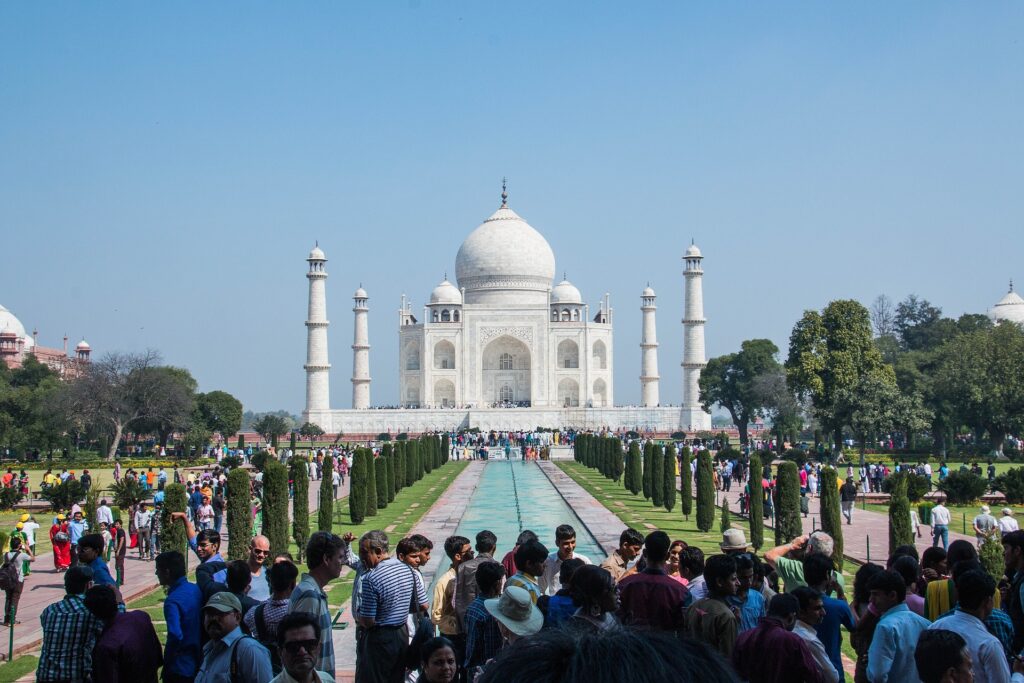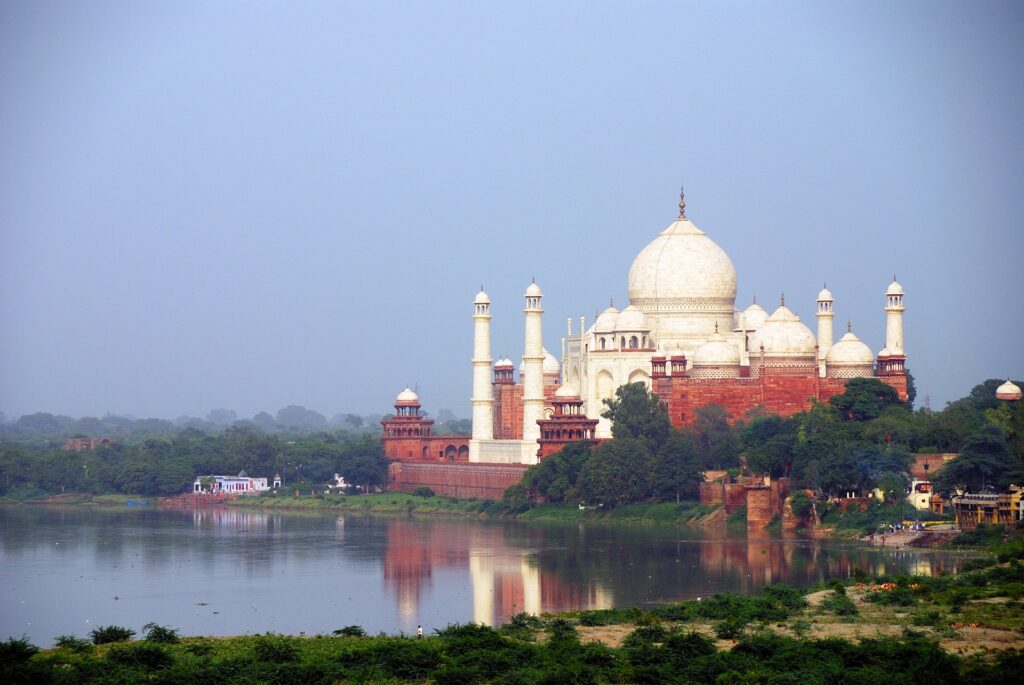Introduction:
Architecture often serves as a testament to grandeur and tells compelling stories that resonate through time. One such architectural marvel is the Taj Mahal, an iconic mausoleum situated in Agra, India. Beyond its breathtaking façade, this magnificent structure holds a deep and enduring love story that has captured the hearts of countless visitors for over four centuries.

The Call of Eternal Love:
Commissioned by the Mughal Emperor Shah Jahan in 1631, the Taj Mahal was built as a mausoleum for his beloved wife, Mumtaz Mahal. Inspired by their unwavering love, Shah Jahan envisioned a tomb that would be unparalleled in its beauty and would stand as a tribute to their eternal love. The Taj Mahal’s construction was a labor of love and devotion that took over twenty-two years to complete.
The Architectural Marvel:
The mausoleum’s design was the result of collaboration between a team of architects, led by Ustad Ahmad Lahauri. Their craftsmanship incorporated elements from various architectural styles, including Persian, Turkish, and Indian. The result was a symphony of elegance and grace, showcasing a perfect blend of exquisite calligraphy, intricate floral patterns, and exquisite marble inlays.
The Architecture Reflecting Love:
The Taj Mahal is renowned for its captivating symmetry. Standing on a raised marble platform, it consists of an impressive central dome flanked by four minarets at each corner. The pristine white marble, embellished with intricate carvings and semi-precious stones, seems to radiate an otherworldly glow during the golden hours of sunrise and sunset. The architects brilliantly synchronized the minarets to lean outward slightly, ensuring that in the event of an earthquake, they would fall away from the main structure, minimizing potential damage.
The Symbolism in Detail:
Every aspect of the Taj Mahal has a profound meaning behind it, capturing the essence of Shah Jahan and Mumtaz Mahal’s love story. The central dome, representing the heavens, is adorned with a finial crafted from pure gold, symbolizing the purity of their love. The intricate calligraphy of Qur’anic verses seen throughout the mausoleum illustrates the spiritual journey towards eternal union. Visitors often linger at the cenotaphs, beautifully placed at the exact center of the tomb, showcasing the emperor and his beloved side by side.
The Gardens of Paradise:
The Taj Mahal’s allure extends to its meticulously designed Mughal gardens, laid out in the Persian Charbagh style. These paradisiacal gardens symbolize an earthly reflection of heaven. Divided into four quadrants by paths lined with cypress trees and water channels representing the four rivers of Islamic Paradise, every element perfectly complements the mausoleum’s sheer magnificence.
The Enduring Love Story:
More:Read about on Red Dunes and Panoramas: Capturing the Beauty of Sossusvlei
The building of the Taj Mahal was not only an architectural endeavor but an eternal tribute to Shah Jahan’s undying love for Mumtaz Mahal. It is said that the emperor’s heartbreak at her untimely death led to a rapid decline in his health and further isolation from the world. Inscribed in calligraphy on the mausoleum wall are the words, “Call on me, and I will answer,” symbolizing their eternal bond and the profound connection even beyond the boundaries of life.
More: Wanted to download Odisha Magazines, visit here
Conclusion:

The Taj Mahal stands not only as an architectural masterpiece but also as an enduring symbol of love that transcends time and space. It is a testament to the human capacity for devotion and the profound impact love can have on shaping history. Beyond the exquisite craftsmanship and awe-inspiring beauty, discovering the eternal love story behind this iconic mausoleum offers a glimpse into the depths of eternal passion and the power of immortalizing love through art and architecture.
FAQ For Discovering Eternal Love Story Behind the Iconic Mausoleum
What is the history behind the iconic mausoleum?
The mausoleum stands as a testament to the eternal love story of a legendary couple who lived centuries ago.
What makes this mausoleum so iconic?
The mausoleum is renowned for its intricate architecture, symbolic design, and the enduring love story it represents.
How can visitors learn more about the love story?
Visitors can explore guided tours, informational plaques, and audio guides to unravel the romantic tale behind the mausoleum.
Is the mausoleum open to the public?
Yes, the mausoleum welcomes visitors from around the world to witness the beauty of the architecture and to learn about the eternal love story it holds.
Are there any special events or ceremonies held at the mausoleum?
Periodic events, cultural celebrations, and ceremonies are held at the mausoleum, showcasing the rich history and traditions associated with the iconic site.

